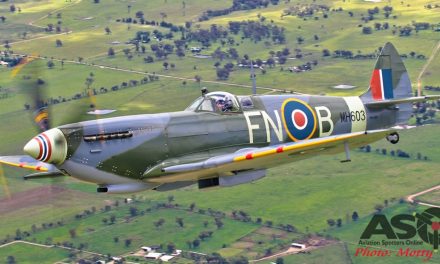It’s just one of those things in anyone’s life if you love aviation …… What would it be like to land on a aircraft carrier and then be catapulted off again ?
I for one really never put too much thought into it. After all, what are the chances of it ever happening ?
With Exercise Talisman Sabre in full swing in two main locations across Australia and off her coastline, ASO headed to Darwin to capture the action and, on the final day of covering the exercise, this question got answered.
I arrived early at RAAF Darwin for the preflight brief by ” Woody “, a pilot from C-2A Greyhound squadron, the “Providers”, Fleet Logistics Support Squadron (VRC) 30, Detachment 5. The main thing “Woody” kept saying to the few media about to depart was “You have to trust the gear.” Only when he had repeated this 5 times over that I thought, maybe I should “trust the gear”.
We set off on the 1 hour flight (roughly 200 miles) from Darwin on board the C-2A Greyhound. Since it is a aircraft designed to do many roles, the interior can be changed out but for the passengers today it was rear facing seats as this is designed to reduce the risk of injury during landing as the arrestor brings the aircraft to a sudden stop on the flight deck. That was an interesting indication of what was to come. To make matters worse there are only two windows in the back. Lucky for me I got to sit beside one. Not everyone handled the flight that well but I was pretty pumped and soon it was clear that it was about to happen, one of the crew told us as we got on that he would yell 3 times “here we go” when we were 15 seconds out! Thats all the warning we get?
Well, right on cue, “here we go ,here we go , HERE WE GO!”
With a sudden thud you get slammed into the seat , the noise is awesome as the engines are going full tilt, but ramp comes down very quick. Soon we are moving and, out the little window, I just see action every where, people in all different coloured shirts moving quickly around, but then I heard that noise that everyone one knows …..the scream of a fast jet with after burners on. I’m sure everyone was thinking ‘what is going on out there?’ but soon it was very clear as the rear doors opened and we were looking at the rear of a Super Hornet about to launch only metres away from our aircraft.
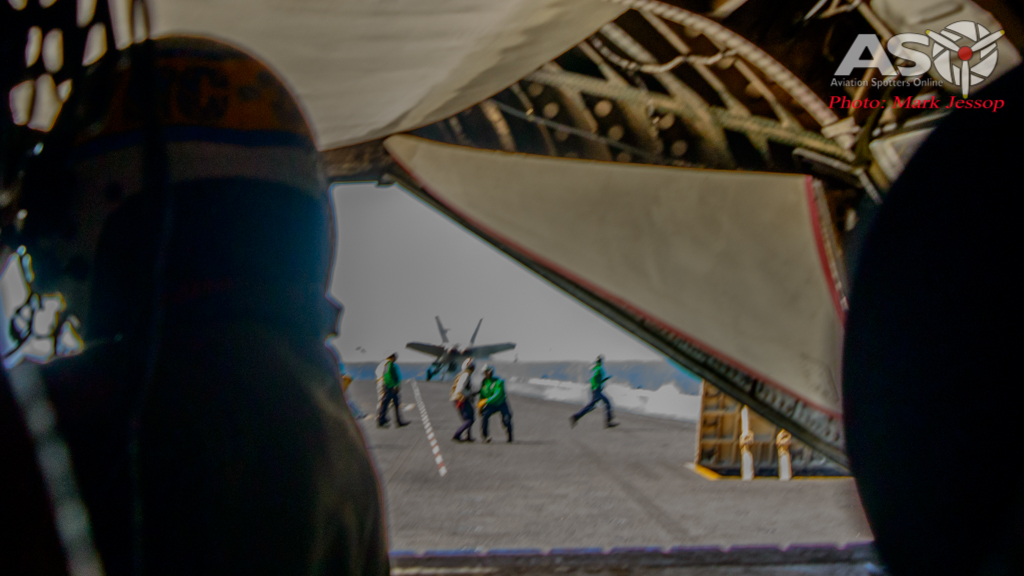
To have an opening scene like this was straight out of a movie. With so much movement going on around us, people running and aircraft launching, it was difficult to absorb and there was no time to stop and try and take it in. No sooner had I taken the photo above and we where whisked off the aircraft across the deck and down some stairs. I don’t think I was the only one left feeling like “what just happened?”.
Walking through tight walkways we were taken to get briefed in the media room about what was in store for us this day. Again, before we knew it, we are told to head back up stairs as this is the only chance to get any take-off pics and there is only one jet left!!!!! It really is a maze but we all made it to see our only launch on Cat 1. Since we were viewing the aircraft from behind and high, as soon as the Super Hornet put the afterburners on the heat haze killed any photos but boom the jet was gone, just like that .
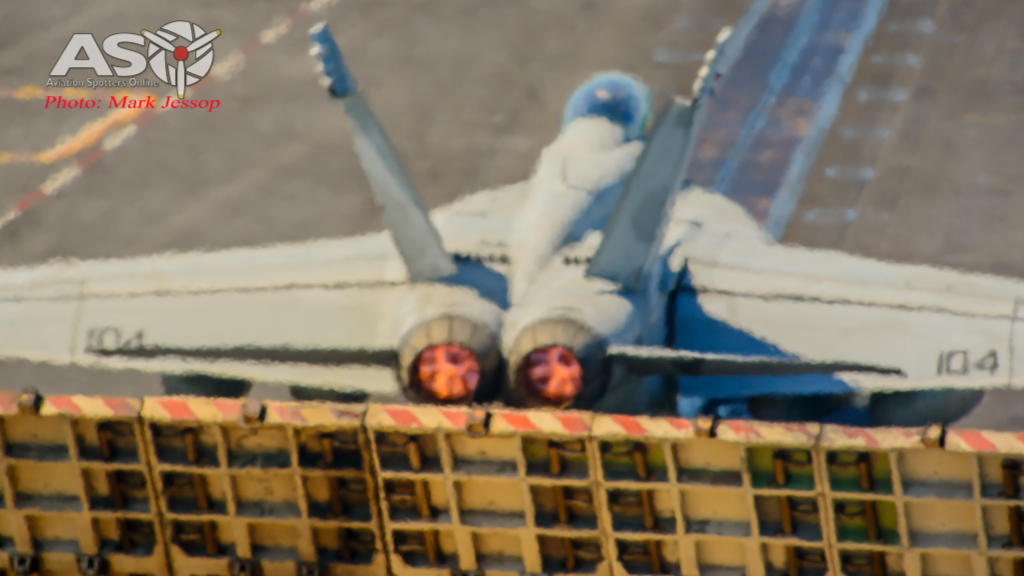
From there we had a small break to get a meal from the Mess, which I have to say had a pretty good selection of food to choose from. I have walked hundreds of miles in the bush and never have a problem with orientation but I found as we were moving through the ship I really never knew where I was at any time, as we went up and down what seemed like 1000 stairs, it was a very different kind of jungle.
Next up was a visit to the “Handlers” room. From this location all movements on board the carrier of all aircraft below deck and above are co-ordinated by a small team lead by Lieutenant Commander Gregory Curl. It’s not until you see this that you really get an idea of just how many aircraft are on-board. It also gives a indication of what state each one is in with different markers like nuts and pegs to show if they have fuel tanks or bombs. The Handler controls everything until the aircraft is airborne which, from there, is taken over by another team on the level above.
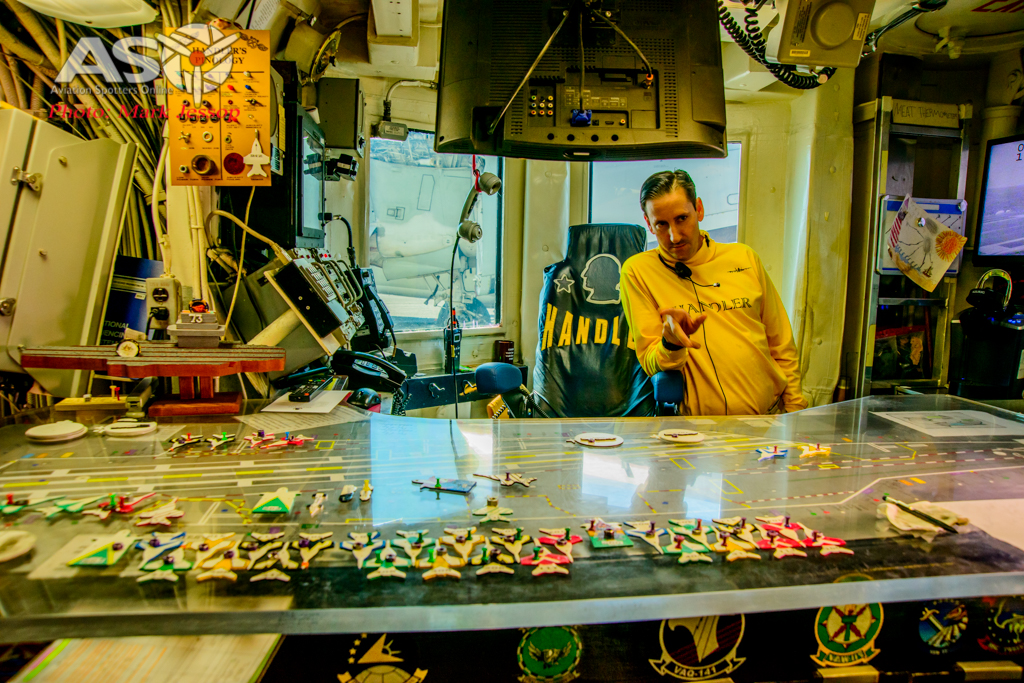
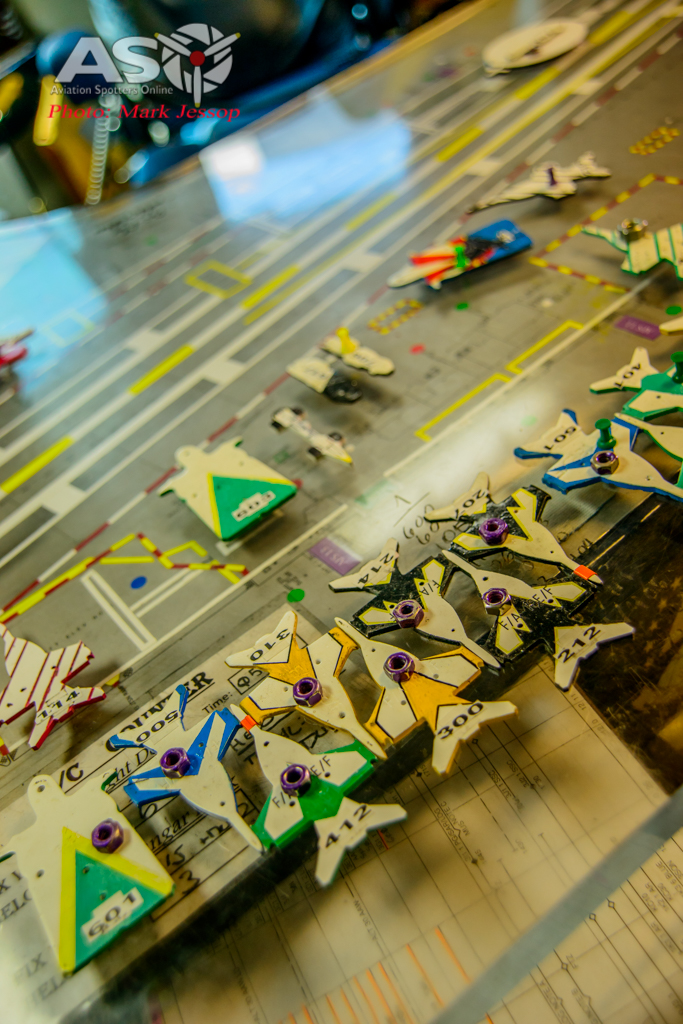
From the handler’s room we moved below deck to what was a MASSIVE hanger. I wouldn’t even know how many aircraft are below deck as they are everywhere and most had people working on them, either fixing them or getting them ready for their next flight. We had plenty of time to walk around and get whatever shots we wanted but it was also just good to take it all in and talk to some of the crew that work so hard to keep everything running on the carrier. It was good to see a mail delivery as, even with the internet and social media, a parcel from home is still something everyone looks forward to.
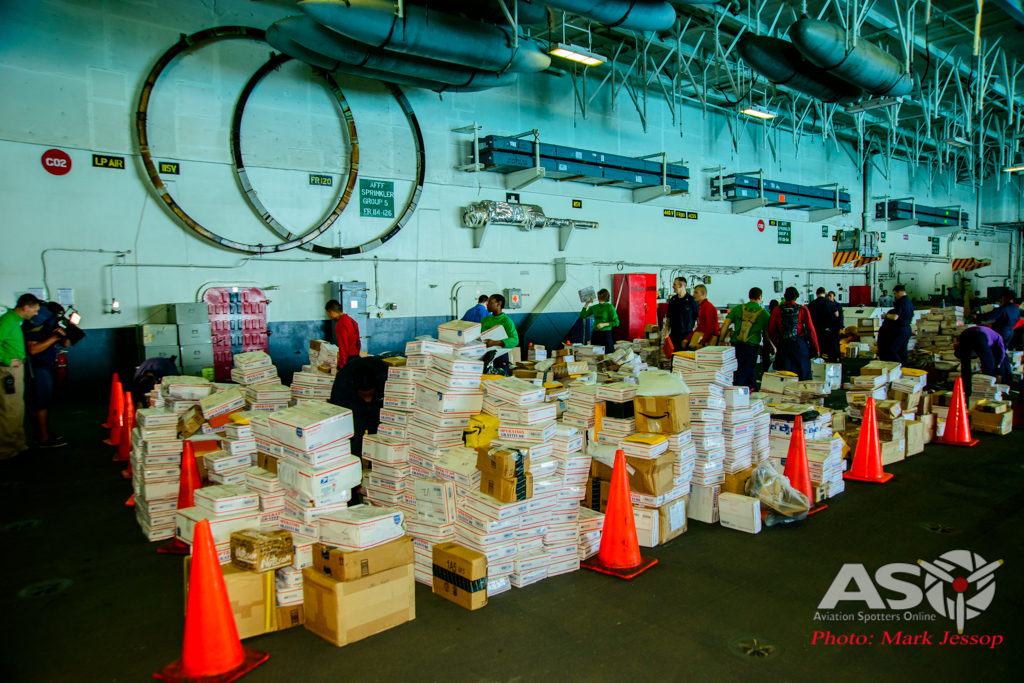
Time was just flying along and I could have walked around below deck all day but without warning the unmistakable sound of fast jets roaring overhead meant we needed to get up on deck. Again up the 1000 stairs. We grabbed our gear and personal protection, as it was going to be loud!
Up on deck we moved out to a white and red line. It had been explained to us in the briefing earlier that if we stepped over that line then flying ops would stop! As the first jet landed I grabbed as many photos as I could. It was only when I took the camera from my eye that I really saw just how close we were! The arresting cable at full stretch is only meters from us and it’s massive. The jets come in at either 3 or 4 at a time with a space of around a minute or maybe two maximum. So in that time the aircraft has to stop, drop the cable and move to its spot out of the way of the next aircraft all in 2 minutes. We got to see 25 aircraft land in under 50 minutes which really doesn’t give you much time to take it all in. Again, a scene that looks nothing less than hectic or even chaotic but is the epitome of military precision. It just doesn’t stop.
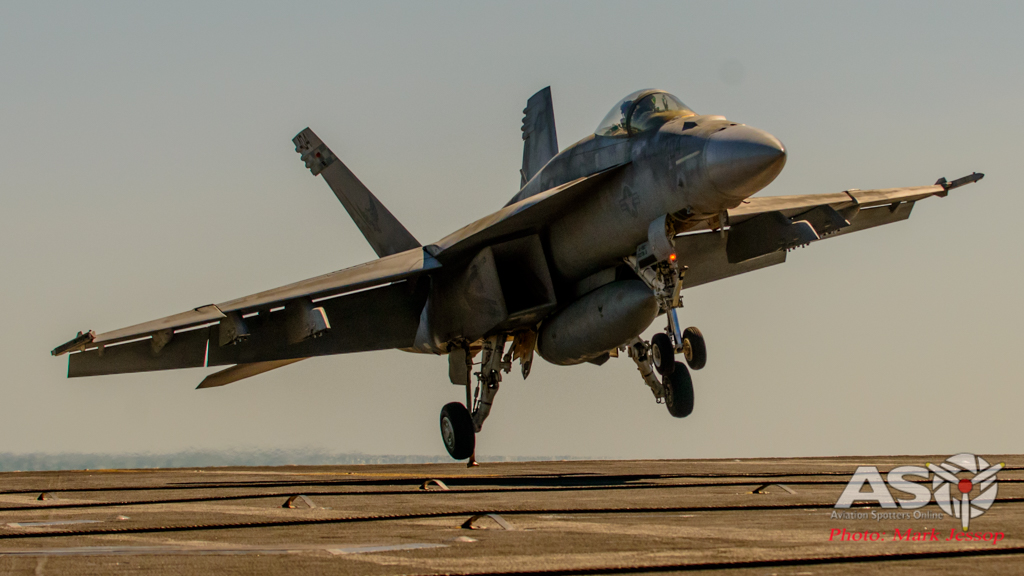

Out of the 25 aircraft that landed only one had to go around but the rest hit the wire with full power going until they had stopped, just in case they missed. To be that close, even with earplugs and earmuffs, the sound is awesome and your body shakes as the power moves across the deck. The carrier is 333m long but they stop in 30m and then move out of the way. The pilot’s skill level shown even on a calm day is amazing but I don’t think I would want to do a night landing in rough seas.
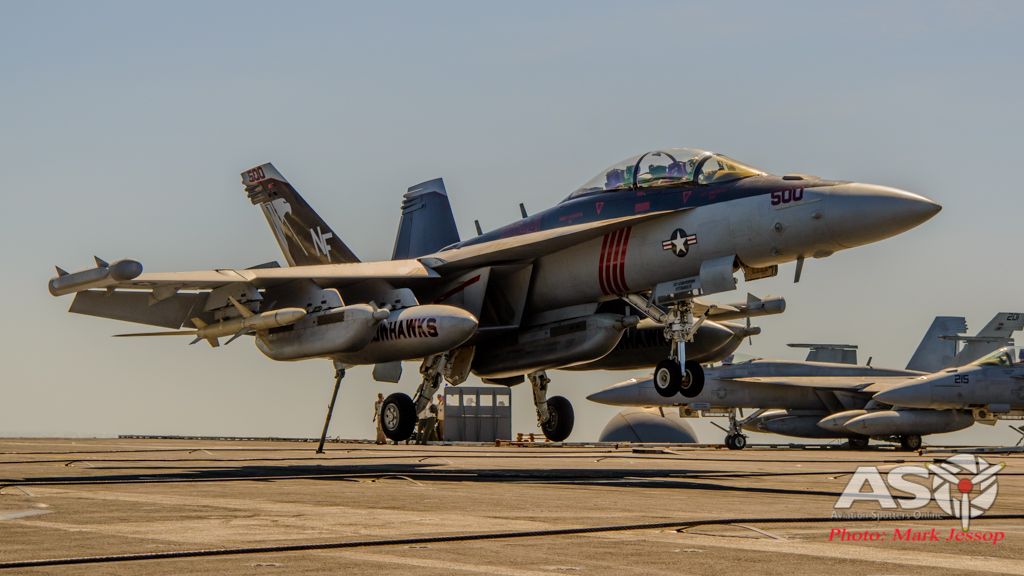

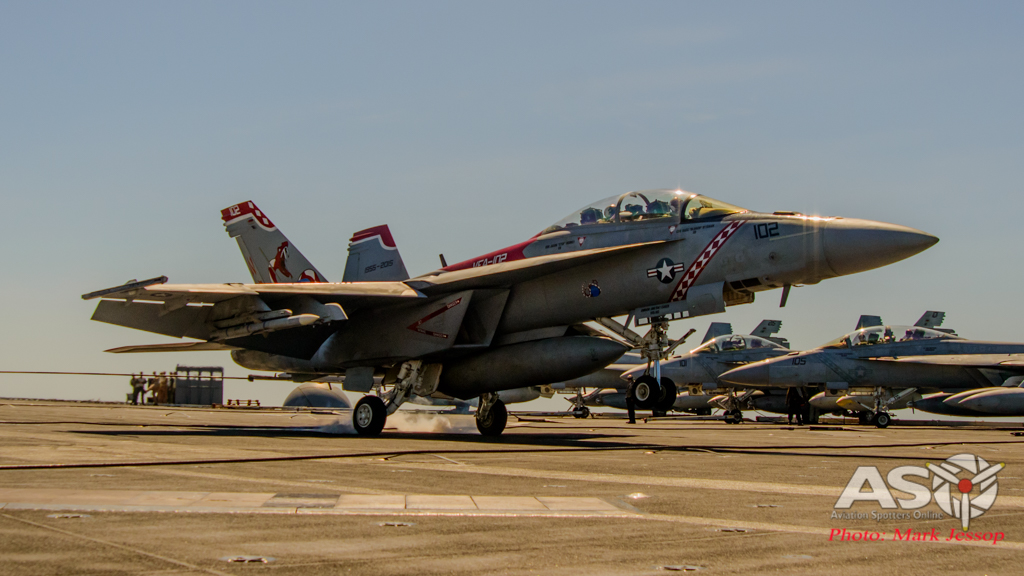
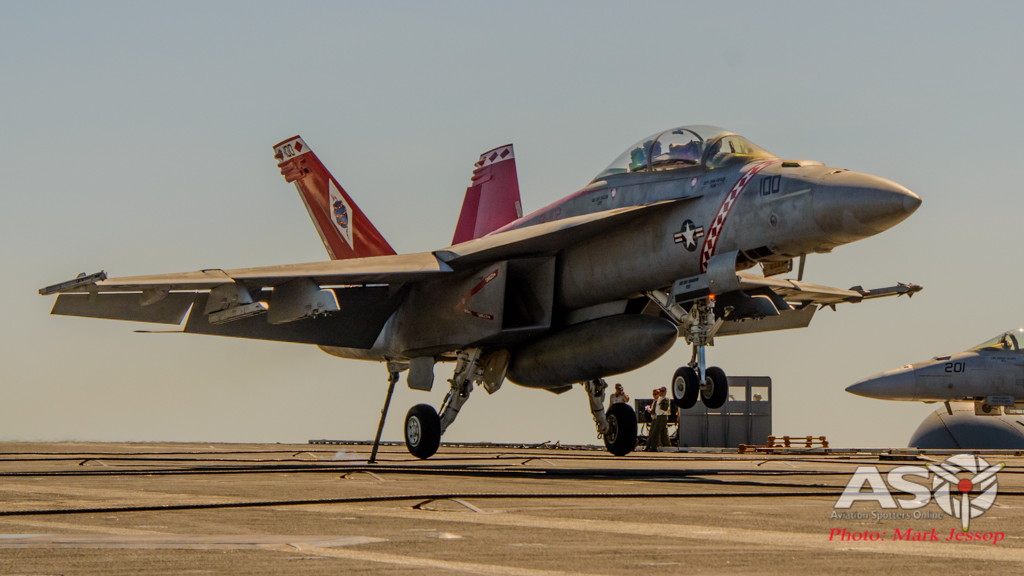

With all of the aircraft back safe on deck, it was time to interview USS George Washington CSG, Navy Rear Adm. John D Alexander, who controls Battle Force 7th Fleet, Task Force Seven Zero, Carrier Strike Group Five. From a great position over the deck he explained what a massive and productive effort this exercise is …
“This exercise illustrates the closeness of the Australia-U.S. alliance and the strength of our military-to-military relationship and it provides an invaluable opportunity to conduct operations in a joint environment that will increase all participants’ ability to plan, coordinate and execute complex operations.”
Coming from a flying background with the A-6E, Rear Adm. Alexander still goes flying at least once a week and has over 3200 flight hours and over 700 carrier-arrested landings. You could still see his eye’s light up when talking about flying operations and the many tasks involved.
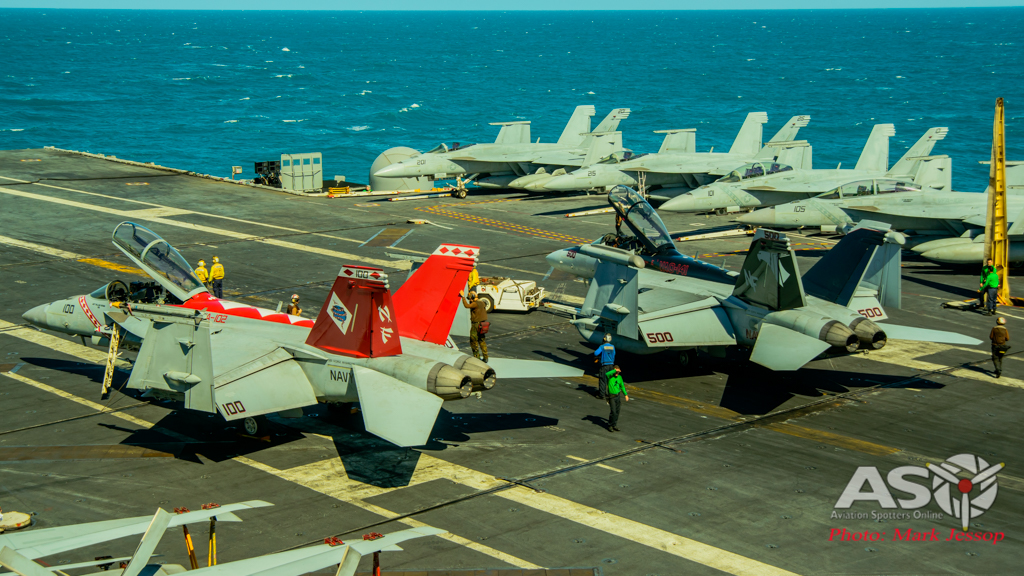
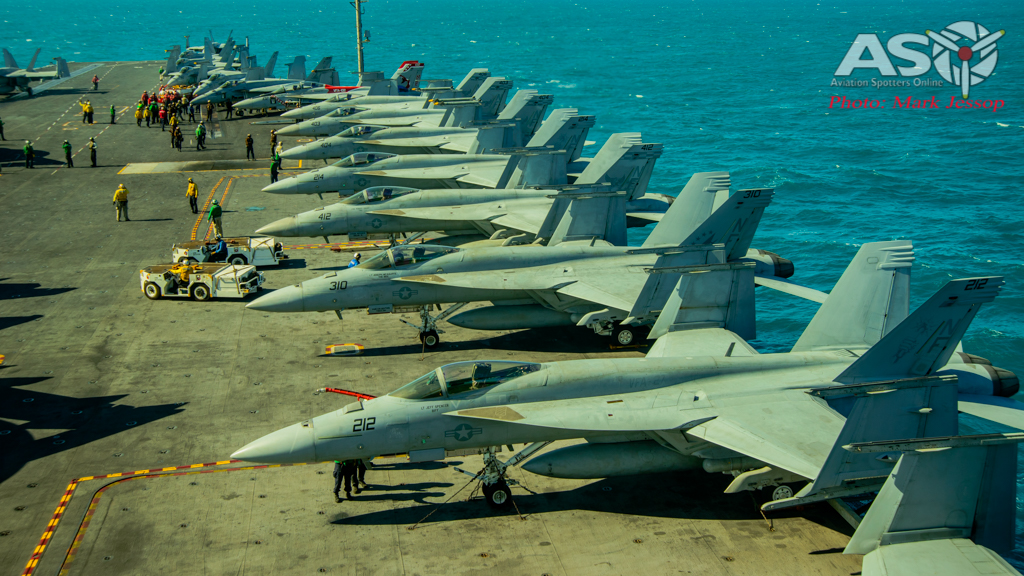

Like all good things it has to finish some time and as we were the 1st flight off in the afternoon it was time to say our goodbyes and get ready for the trip home. Oh that’s right, we have to shot off the deck via catapult! Zero to 140knots (or about 260kph) in a matter of seconds. No time to think about that now as again after a 1000 stairs to get back on deck, we get strapped into the aircraft and the doors shut. The aircraft moved around the deck positioning for take off. We all felt a clunk of the bar that connects the aircraft to the catapult. The engines wind up and start to scream and we hear the now famous ” here we go” 3 times. I’m just sit there strapped in holding on as hard as I can to my seat for the next 15 seconds … BOOM!! Your straps are slammed into your body as there is no way you could ever have those straps tight enough. Almost too suddenly you’re off flying as if nothing had happened … it’s just that quick.
The ride home was just about taking it all in. Trying to absorb just how awesome the day was and how well the team on-board the USS George Washington had looked after us.
The USS George Washington is heading home after 7 years on forward deployment at U.S. naval base in Yokosuka, south of Tokyo. The replacement will be the USS Ronald Reagan which is a newer carrier but still from the same class and we all hope that she will visit our shores soon.
I have to thank everyone of the 5500 people who live and work on the carrier as well as the Defence media team who made this all possible. It is an honor to have had the chance to highlight this rare military operation and is something I will never forget.
Mark Jessop
Click HERE to see the full USS George Washington image gallery.





